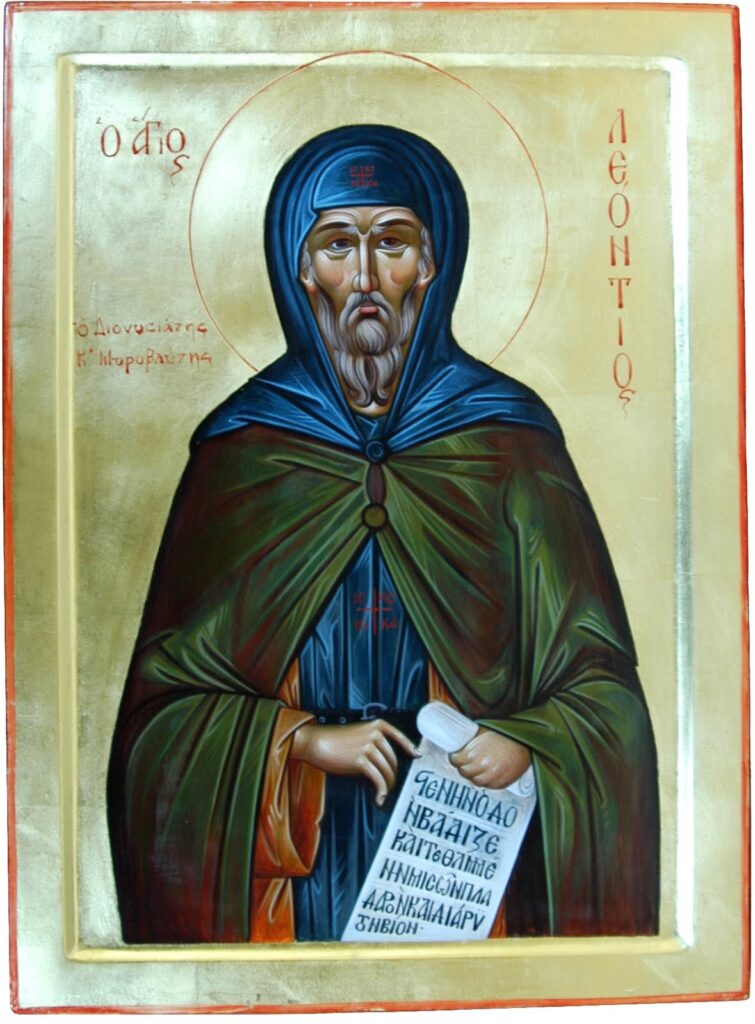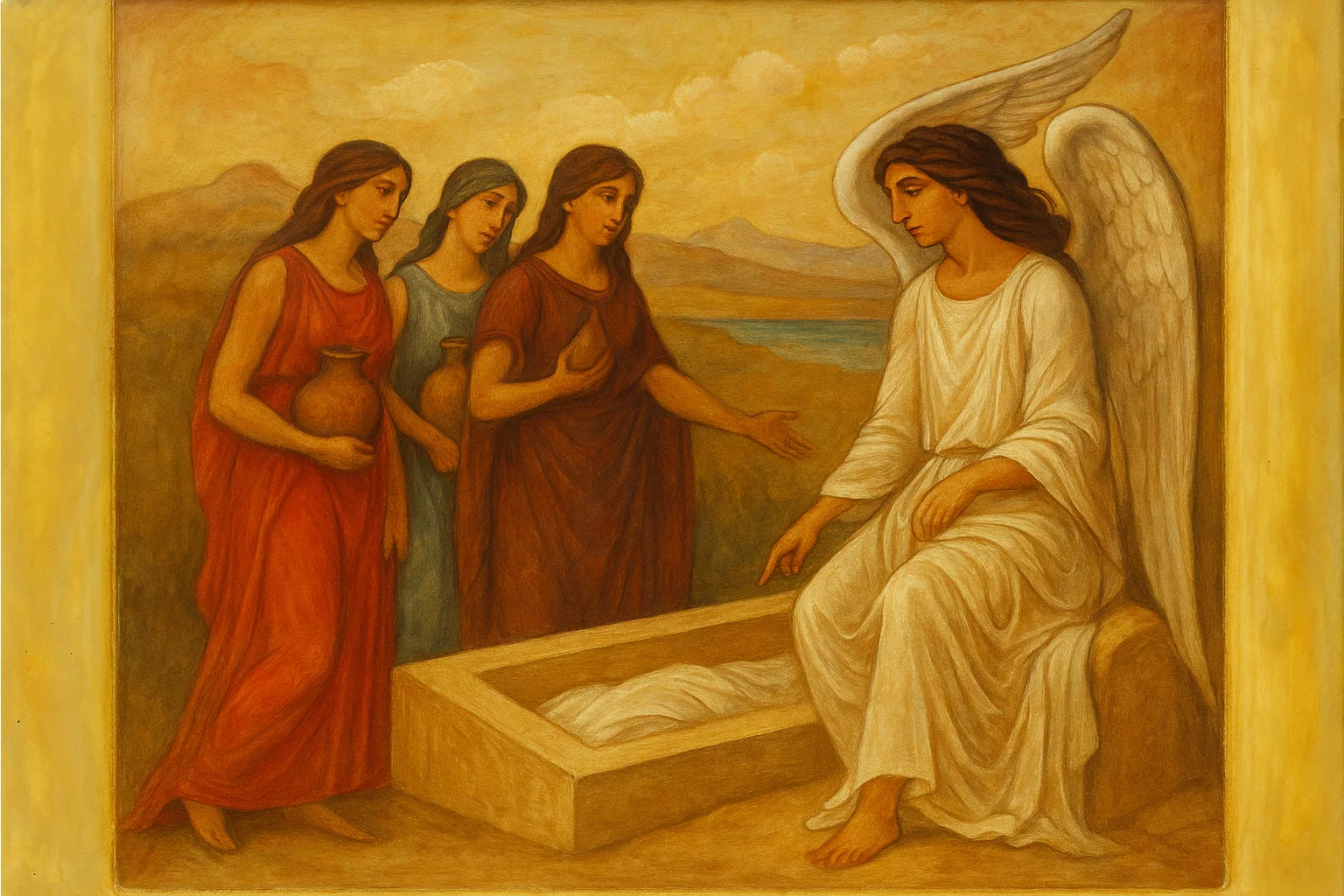From the earliest cults of the Divine to the veiled incense of Byzantine churches, myrrh has always marked a crossing. It is perfume and medicine, wound and healing, the fragrance of desire and the anointing oil of burial. Throughout centuries, this resin, one that is thick, red-gold, bittersweet, has been both currency and secret, a material bond between the world of flesh and the world of Spirit. Myrrh carries in its scent the secret history of the sacred feminine: the body that overflows, the altar that drips, the vessel that transmits mystery not by closing but by pouring out. In the story of Leontios the Myrrh-Streamer, the paradox comes to life: the incorrupt male body becomes a vessel for the most feminine of all Divine miracles, the streaming of fragrant oil. Through myrrh, the boundaries between man and woman, altar and body, death and rebirth are dissolved.
I. The Ancient Currents: Myrrh in Cult, Eros, and Temple
Myrrh’s role in spiritual history far predates Christianity. In the temple rituals of Egypt, it was offered to Isis as both perfume and offering, mingling the erotic with the funereal. The embalming of the dead was as much a work of love as of preservation; to be anointed with it was to be prepared for union with the Godddess beyond the grave. Among the Sumerians, myrrh belonged to Inanna, the goddess of both sexual power and underworld descent, whose rites blurred the boundaries between lover and mourner, priestess and corpse.
Myrrh’s Hebrew name, “mor,” echoes in the Song of Songs, where the beloved is likened to “a bundle of myrrh” that lies between the breasts, a line that entwines the language of sensuality and sacredness. The Greeks and Romans, too, infused their shrines to Aphrodite and Venus with myrrh, recognising it as both aphrodisiac and funereal balm. This double valence was never lost: myrrh was present at birth, at love, and at death, marking every threshold where the body meets the Unknown.
Throughout these traditions, myrrh was never simply an object; it was an event, a process, a sign of divine presence. The act of anointing, of pouring out, of suffusing flesh with fragrance, was not only a gesture of honour but a recognition of the body’s power to become altar. To be anointed with myrrh was to be marked for transformation, sometimes for healing, for Eros, for death. In every case, it was an admission that the flesh itself could overflow with the Sacred, that holiness was not found in austerity or dryness, but in the ability to pour forth, to give more than is contained.
II. Christian Miracles: The Myrrhbearers and Leontios the Myrrh-Streamer
Within Christianity, myrrh acquires a new but deeply familiar layer of meaning. The Gospels open with the magi bringing myrrh to the infant Christ: a prophecy, in scent, of both his future anointing and his death. Later, it is the women, with Mary Magdalene foremost among them, who come to the tomb with jars of myrrh and spices, intent on performing the last service of love for the dead body of the divine. In Eastern tradition, these women are remembered as the Myrrhbearers: archetypes of fidelity, grief, and the miraculous; keepers of the threshold between mourning and resurrection. Their act is not passive mourning but active participation in the mystery, and the myrrh they carry is both an offering to the lost beloved and the sign that the body itself remains the locus of divine revelation.
It is in the cult of the myrrh-streaming saints, however, that the paradox becomes most acute. In the Orthodox sphere, the tombs and sometimes even the living bodies of certain saints, both male and female, are said to exude myrrh: fragrant, oily, inexhaustible. This phenomenon is interpreted as a direct manifestation of divine grace, yet its imagery cannot be mistaken. The incorrupt body becomes the vessel of overflow; the body itself, rather than simply receiving the sacred, becomes its inexhaustible source. Among these Leontios of Argos is one of the most celebrated. His tomb, streaming with sweet oil, is a site of pilgrimage for those seeking healing, fertility, or vision. The fragrance that issues from his relics is not simply proof of sanctity but a sign that even the male, ascetic body can be penetrated by the miracle of sacred overflow. A phenomenon that, in every other religious context, is coded as feminine, lunar, and oracular.

III. The Feminine Overflow: Myrrh, Moon and Mystery
Its symbolism is rooted in the ancient intuition that the most sacred elements are those that overflow. The Goddess is not simply mother or queen; she is the source of milk, of blood, of tears; all the substances that issue from the body unbidden, all those that mark the cycles of birth, Eros, death, and return. Thick and red-gold, myrrh was always seen as an analogue to these secretions: the menstrual blood of the Goddess, the milk of the Mother, the tears of the grieving priestess. The Moon governs these tides; her waxing and waning are echoed in the flow of myrrh, just as the moon’s phases are marked in the cycles of the female body.
Within the body of the saint, this lunar-feminine dynamic is recapitulated. The body becomes a moon, a vessel that cannot contain its secret, a container that bursts, an altar that gives more than it receives. The streaming of myrrh from relics, especially those of ascetic men, inverts the usual order: the masculine becomes the site of the feminine miracle. In this inversion, there is a deep message. True sanctity is not sterility but fecundity; not limitation but the capacity to overflow, to become the source of healing, anointing, prophecy. The saint is not a wall but a fountain; not a tomb, but a womb.
IV. Gnostic and Hermetic Echoes: Oracular Body, Alchemical Oil
Gnostic tradition, always attentive to paradox and symbol, recognises in myrrh the secret of the oracular body. In texts such as the Gospel of Philip, the importance of anointing with oil is repeatedly emphasised. The oil, like the kiss, is a channel of gnosis: a direct, bodily transmission of the divine. Myrrh is not simply a marker of death but a sign of the body’s openness to mystery, the flesh as locus of revelation. The Gnostics saw the world as a place of mixture, of matter and spirit, male and female, light and darkness. And myrrh, with its bittersweet scent and ambiguous use, became the perfect emblem of this mixture.
In Hermetic philosophy, the body that overflows, one that dreams, weeps, sweats, and bleeds, is not the enemy of the soul but its partner. The lunar-venusian current, so strong in the Ancient world, saw the moon as the mirror of all that changes, all that is fluid, all that pours forth. Myrrh, the quintessentially lunar resin, becomes the material sign of the Hermetic union: where above meets below, where Spirit touches matter, where the Goddess is known not in abstraction but in the touch and scent of the real.
Conclusion: The Perfume as Oracular Gift
To honour myrrh is to reclaim a lost lineage: one where the sacred is known by its capacity to overflow, where the body is altar because it gives more than it withholds. Myrrh connects the Christian miracle to the Venusian, the lunar, the oracular. Thes are all currents that understand the Divine not as absence but as presence, not as law but as gift. In the miracle of Leontios, the oil flows from what was supposed to be closed; the tomb becomes fountain, the saint becomes moon, the masculine becomes vessel for the feminine excess. In every act of anointing, every prayer scented with myrrh, every body that dares to overflow, the secret returns: holiness is abundance, and the sign of the divine is not austerity, but gold poured out for the living, the dying, the altar and the world.
